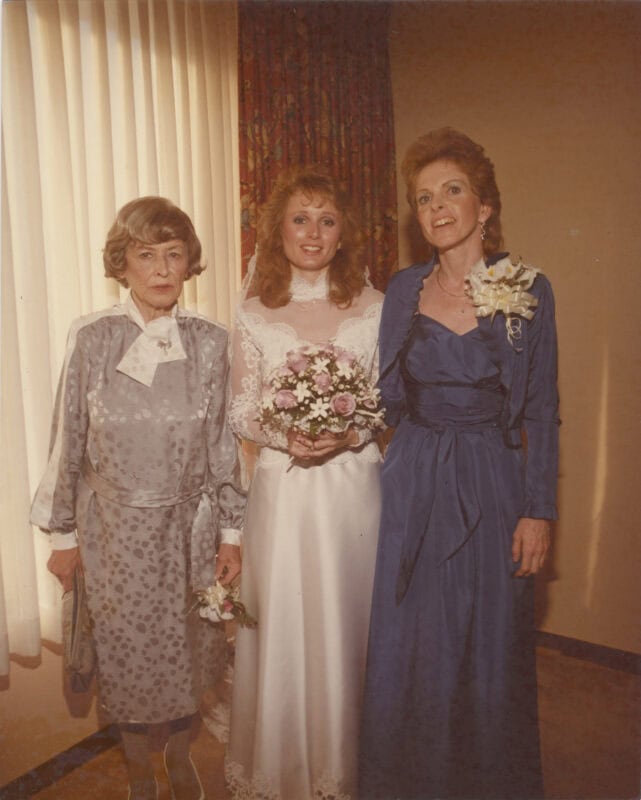It’s a story more than 80 years in the making.
Cheryl Bernstein is the great-granddaughter of Holocaust refugees who were forced to flee Czechoslovakia in 1938 when the Nazis arrived. Her grandmother, mother and grandfather fled the city of Brno — located in the modern-day Czech Republic — and ultimately ended up in the United States in 1940.
That’s when the family learned that Bernstein’s great-grandfather’s estate was essentially lost after the Nazis took over Johann Bloch’s home in Brno. That included a Renaissance-era painting by German artist Johann Carl Loth titled “Isaac Blessing Jacob,” starting a decades-long search for the historic piece.

Bernstein’s grandmother died in 1997, leaving Bernstein and her mother to pick up the trail. Bernstein, whose family has lived in the Santa Clarita Valley for more than 30 years, eventually found a website, the Lost Art Database, a foundation based in Germany that seeks to find cultural property seized by the Nazis, in 2000. She registered the painting with the foundation in hopes of finding a match somewhere.
After being referred to a few other organizations, Bernstein’s attorney eventually contacted her in March 2020 with news that the painting may have been located.
“I have these corresponding feelings of utter panic about the pandemic, and are we all going to live,” Bernstein said in a phone interview with The Signal, “and this weird elation, like, ‘What? You found our painting? This is nuts.’”
The story of the painting’s journey being returned to Bernstein’s family — and how the family originally got it — goes through multiple places.
According to Bernstein, the painting was first sold to the Blochs in 1922 at an auction house in Vienna, Austria, known as the Dorotheum. After the Nazis took it, it resurfaced back at the Dorotheum in 1939, but the artist attribution was changed to a more prominent one. Bernstein said she emailed the auction house after recognizing a picture of the painting, but officials there told her they had no record of the painting being sold.

It took more than 80 years for the painting to resurface, coincidentally back at the Dorotheum in 2020. That’s when officials were alerted that the painting was stolen, and after using old photographs taken by Bernstein’s grandmother of the Bloch estate in Brno, it was finally returned.
“That’s basically how we found it, how we got it back,” Bernstein said. “And then, you know, my mother and I are like, ‘What are we going to do with a giant painting?’”
The painting was eventually given to the Skirball Cultural Center, located near Sepulveda Boulevard and Mulholland Drive in Los Angeles. Bernstein said she and her mother knew it would be a safe place for it and a place that would honor her family’s journey, one that she likened to what is happening due to the war in Ukraine and the Israel-Hamas conflict currently ongoing in and around Gaza.
“We knew it needed to go into Skirball, that they would honor the story, they would honor our heritage,” Bernstein said. “And especially in a time like this — remember, this is before Ukraine, Gaza and all that, but we still knew it was a relevant story, even more relevant now — to understand the generational trauma that goes on with war, and that goes on with breaking families apart in this really horrific way.”

The painting is now part of an exhibit titled “RECLAIMED: A Family Painting” at the Skirball museum through March 3. Bernstein will be hosting a special tour of the exhibit, along with museum curator Alissa Schapiro, on Saturday from 2 to 3 p.m. as part of International Holocaust Remembrance Day.
The painting will be on loan with the Skirball museum for the next 17 years.
Bernstein credited her “brilliant” grandmother for keeping a record of the Bloch family estate through photographs and other written accounts. She said when her mother, who is still alive, first saw the painting on a Zoom video call in 2020, that it was a “profound” moment.
“It was a profound sense of finishing something her mother started that was so important to her mother,” Bernstein said. “But we didn’t understand the importance until we cleaned out her documents and found all the lawsuits and all the letters and all the work she had done. We didn’t know, but it was always in the background during my mother’s childhood. So she sort of knew.”
Bernstein isn’t sure what will be done with the painting once the Skirball museum’s loan runs out. But she does know that while it’s on display there, her family’s history will also be on display for friends, family, loved ones and anyone else to learn about.
“My grandmother and her sister were the only Blochs that survived,” Bernstein said. “The Skirball has done an amazing job of recreating the journey that my mother and my grandmother went on from the time they fled. It starts in Brno where they lived, and you kind of walk around to see the painting in the dining room, and then you continue on to see their search in L.A. when they settled here in L.A.
“I think it’s very moving. I think they did a great job and very moving, and did a great job of telling our story.”
For more information on the exhibit, visit tinyurl.com/2k88zyxz or call 310-440-4500. The Skirball museum is located at 2701 N. Sepulveda Blvd., Los Angeles, CA, 90049.








